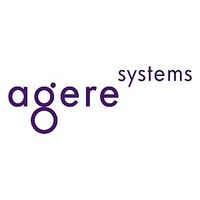OR3T125 Agere Systems, OR3T125 Datasheet - Page 7

OR3T125
Manufacturer Part Number
OR3T125
Description
3C and 3T Field-Programmable Gate Arrays
Manufacturer
Agere Systems
Datasheet
1.OR3T125.pdf
(210 pages)
Available stocks
Company
Part Number
Manufacturer
Quantity
Price
Company:
Part Number:
OR3T125-6PS208
Manufacturer:
LATTICE
Quantity:
30
Company:
Part Number:
OR3T125-6PS240-DB
Manufacturer:
LUCENT
Quantity:
96
Part Number:
OR3T125-6PS240-DB
Manufacturer:
LATTICE
Quantity:
20 000
Company:
Part Number:
OR3T1256PS208-DB
Manufacturer:
AGERE
Quantity:
201
Part Number:
OR3T1256PS208-DB
Manufacturer:
LATTICE
Quantity:
20 000
- Current page: 7 of 210
- Download datasheet (5Mb)
Data Sheet
June 1999
Description
FPGA Overview
The ORCA Series 3 FPGAs are a new generation of
SRAM-based FPGAs built on the successful OR2C/
TxxA FPGA Series from Lucent Technologies Micro-
electronics Group, with enhancements and innovations
geared toward today’s high-speed designs and tomor-
row’s systems on a single chip. Designed from the start
to be synthesis friendly and to reduce place and route
times while maintaining the complete routability of the
ORCA 2C/2T devices, Series 3 more than doubles the
logic available in each logic block and incorporates sys-
tem-level features that can further reduce logic require-
ments and increase system speed. ORCA Series 3
devices contain many new patented enhancements
and are offered in a variety of packages, speed grades,
and temperature ranges.
The ORCA Series 3 FPGAs consist of three basic ele-
ments: programmable logic cells (PLCs), programma-
ble input/output cells (PICs), and system-level features.
An array of PLCs is surrounded by PICs. Each PLC
contains a programmable function unit (PFU), a sup-
plemental logic and interconnect cell (SLIC), local rout-
ing resources, and configuration RAM. Most of the
FPGA logic is performed in the PFU, but decoders,
PAL -like functions, and 3-state buffering can be per-
formed in the SLIC. The PICs provide device inputs
and outputs and can be used to register signals and to
perform input demultiplexing, output multiplexing, and
other functions on two output signals. Some of the sys-
tem-level functions include the new microprocessor
interface ( MPI ) and the programmable clock manager
( PCM ).
Lucent Technologies Inc.
PLC Logic
Each PFU within a PLC contains eight 4-input (16-bit)
look-up tables (LUTs), eight latches/flip-flops (FFs),
and one additional flip-flop that may be used indepen-
dently or with arithmetic functions.
The PFU is organized in a twin-quad fashion: two sets
of four LUTs and FFs that can be controlled indepen-
dently. LUTs may also be combined for use in arith-
metic functions using fast-carry chain logic in either
4-bit or 8-bit modes. The carry-out of either mode may
be registered in the ninth FF for pipelining. Each PFU
may also be configured as a synchronous 32 x 4 sin-
gle- or dual-port RAM or ROM. The FFs (or latches)
may obtain input from LUT outputs or directly from
invertible PFU inputs, or they can be tied high or tied
low. The FFs also have programmable clock polarity,
clock enables, and local set/reset.
The SLIC is connected to PLC routing resources and to
the outputs of the PFU. It contains 3-state, bidirectional
buffers and logic to perform up to a 10-bit AND function
for decoding, or an AND-OR with optional INVERT
(AOI) to perform PAL -like functions. The 3-state drivers
in the SLIC and their direct connections to the PFU out-
puts make fast, true 3-state buses possible within the
FPGA, reducing required routing and allowing for real-
world system performance.
ORCA Series 3C and 3T FPGAs
7
Related parts for OR3T125
Image
Part Number
Description
Manufacturer
Datasheet
Request
R

Part Number:
Description:
Power Modules DC/DC Converters
Manufacturer:
Agere Systems
Datasheet:

Part Number:
Description:
Quad differential driver. Intern. term. none. Surge-protection no.
Manufacturer:
Agere Systems
Datasheet:

Part Number:
Description:
InGaAs Avalanche Photodetector
Manufacturer:
Agere Systems
Datasheet:

Part Number:
Description:
Ringing Access Switch
Manufacturer:
Agere Systems
Datasheet:

Part Number:
Description:
Quad differential receiver
Manufacturer:
Agere Systems
Datasheet:

Part Number:
Description:
ORCA feild-programmable gate array. Voltage 3.3 V.
Manufacturer:
Agere Systems
Datasheet:

Part Number:
Description:
Quad differential driver. Intern. term. none. Surge-protection no.
Manufacturer:
Agere Systems
Datasheet:

Part Number:
Description:
Quad Differential Line Receivers
Manufacturer:
Agere Systems
Datasheet:

Part Number:
Description:
4096-channel, 32-highway time-slot interchager
Manufacturer:
Agere Systems
Datasheet:

Part Number:
Description:
QUAD-FET (Fast Ethernet Transceiver) for 10Base-T/100Base-TX/FX
Manufacturer:
Agere Systems
Datasheet:











